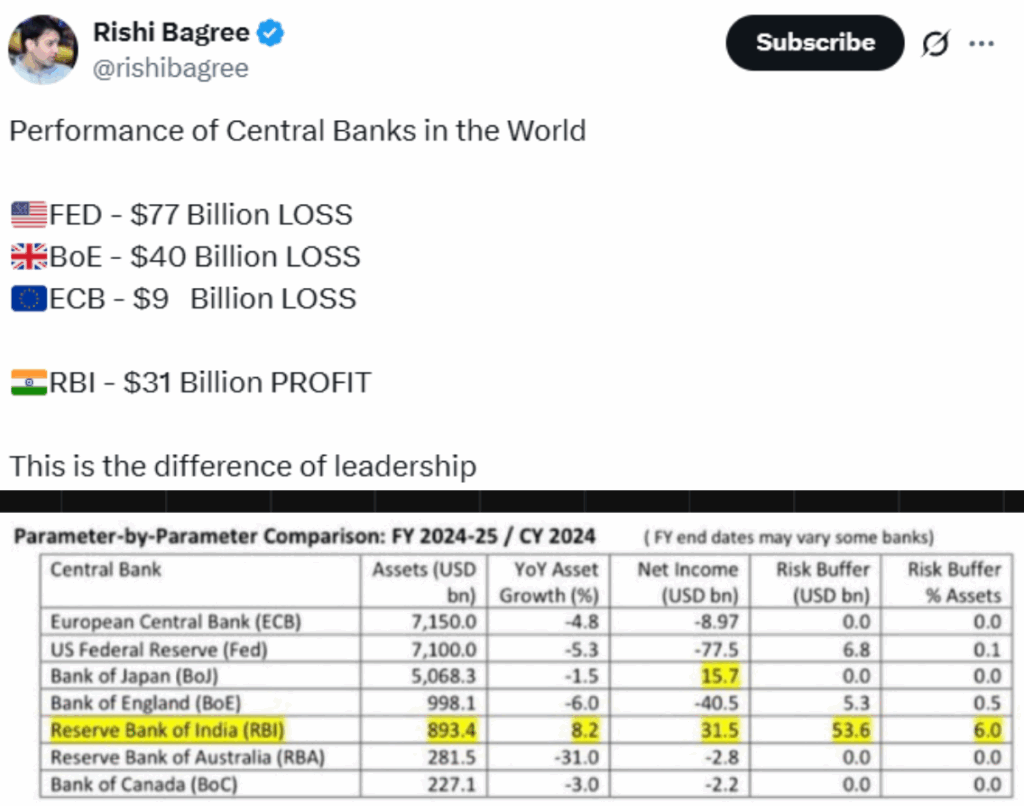RBI’s Billion-Dollar Surprise: Outperforming Global Central Banks
India’s central bank, the Reserve Bank of India (RBI), has reported an impressive profit of $31 billion, a remarkable contrast to the losses incurred by major global central banks.

Recent data reveals that the U.S. Federal Reserve lost $77 billion, the Bank of England lost $40 billion, and the European Central Bank (ECB) faced a $9 billion deficit. In this global context, RBI’s strong performance stands out.
How Central Banks Make (or Lose) Money
A central bank’s income primarily comes from its holdings—government bonds, foreign exchange reserves, and interest paid on deposits by commercial banks. These assets are subject to mark-to-market adjustments based on interest rate movements. When rates rise sharply, as seen in the West, the value of bond portfolios can decrease significantly, leading central banks to report large losses. In contrast, RBI’s effective treasury management has shielded it from similar outcomes.
Leadership and Strategy: RBI’s Tactical Edge
What differentiates the RBI? A crucial factor could be its leadership and strategic decision-making. From interest rate adjustments to foreign exchange reserve management, the RBI has acted with prudence and foresight. Unlike many global peers still grappling with legacy policies of ultra-low interest rates, India’s central bank has maintained a balanced approach, carefully managing duration risk and ensuring profitability.
Inflation Control and Economic Growth: The Indian Advantage
RBI’s performance is also bolstered by broader macroeconomic success. India continues to be one of the fastest-growing major economies, with inflation under control and interest rates recently cut by 75 basis points. This combination of growth and stability enhances the central bank’s flexibility and operational success.
Smaller Balance Sheet, Bigger Impact
Despite managing a comparatively smaller balance sheet—under $1 trillion compared to the ECB’s $7.1 trillion—RBI has achieved superior results. This demonstrates its efficiency and precision in asset management, especially when other central banks are facing considerable losses. The surplus profits also allow the RBI to issue substantial dividends to the government, helping to mitigate fiscal deficit concerns.
A Model for Central Banking Efficiency?
RBI’s recent performance highlights the importance of disciplined financial stewardship at the central bank level. At a time when most global peers are reporting losses, India’s central bank is not only staying afloat but thriving. This profitability could serve as a stabilizing factor for India’s fiscal framework and set a benchmark for central bank governance worldwide.
Do you have thoughts on RBI’s outperformance? Share them in the comments below! If you found this blog insightful, don’t forget to SHARE it with your friends.










